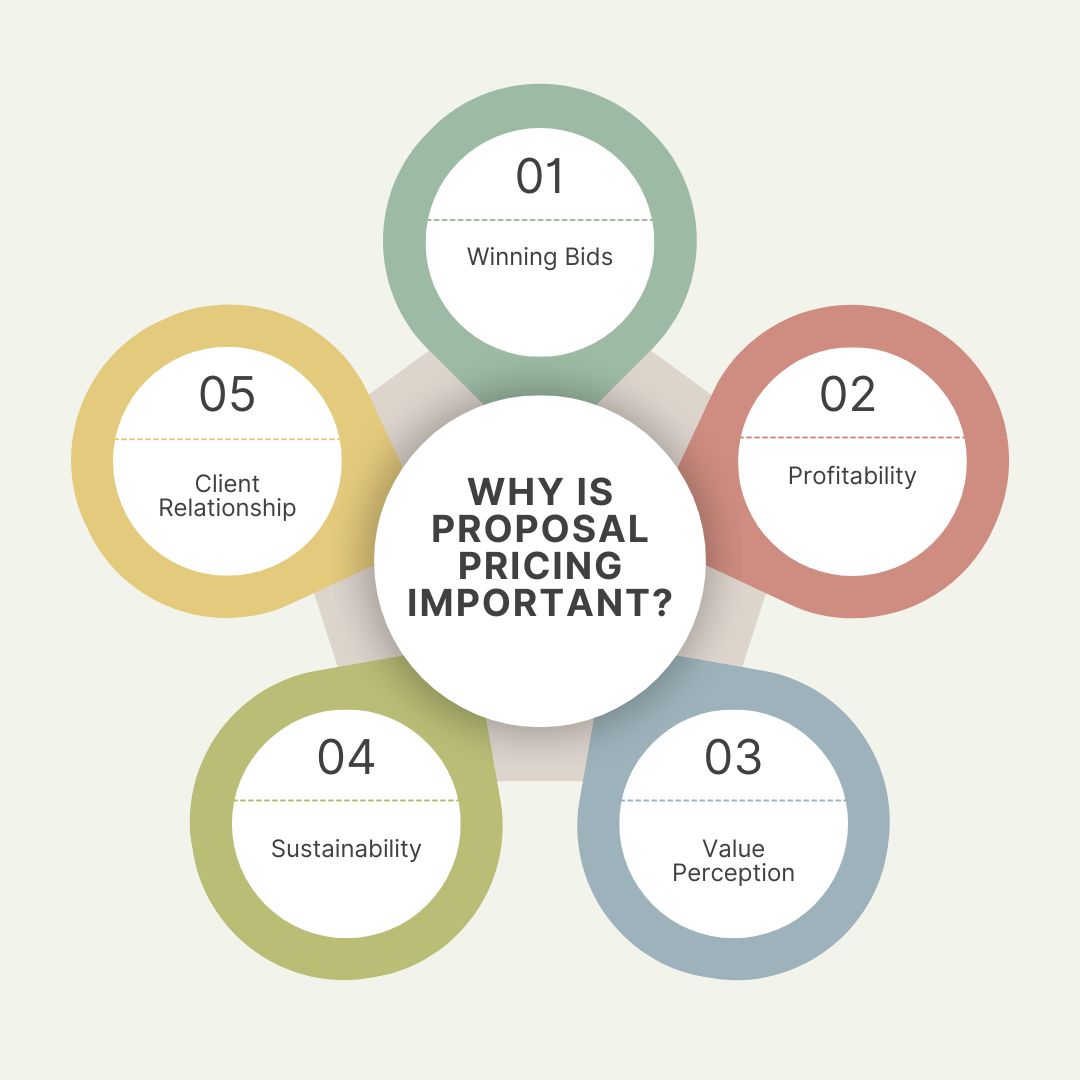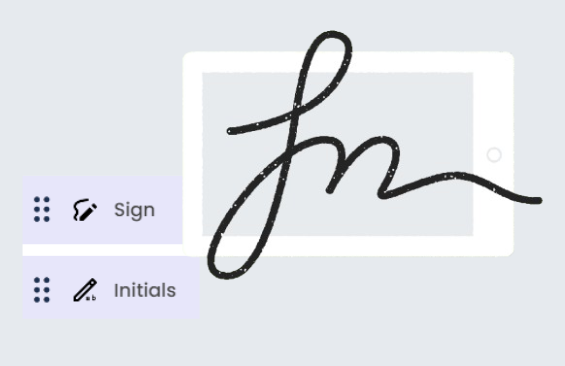When it comes to winning new business, crafting a well-structured proposal is key, but pricing that proposal is just as crucial. Proposal pricing refers to the strategy and process of determining the price for a product, service, or project being offered to a client. In competitive industries, the right pricing strategy can mean the difference between winning or losing a bid. However, proposal pricing isn’t just about being the lowest bidder; it’s about balancing competitiveness with profitability and value.
This comprehensive guide explores what proposal pricing is, why it’s important, common strategies, key considerations, and best practices to help you create proposals that are both competitive and profitable.
What is Proposal Pricing?
Proposal pricing is the process of determining the cost that you will charge a client for a specific product, service, or project in response to a request for proposal (RFP). Pricing plays a critical role in proposals, as it communicates the value of your offer and directly impacts the client’s decision-making process. A well-priced proposal ensures that your company can remain competitive in the market while covering costs and generating a profit.
When pricing a proposal, companies must consider various factors such as production or service costs, market conditions, competitor pricing, the scope of the project, and the client’s budget.
Read More: Proposal vs Contract: Understanding the Main Differences
Why is Proposal Pricing Important?

- Winning Bids: Price is one of the most important factors clients consider when reviewing proposals. Even if you offer the best product or service, pricing can make or break the deal. An effective pricing strategy allows you to create a proposal that offers value without sacrificing profitability.
- Profitability: A common mistake is to underprice a proposal to win business, only to realize later that the contract is unprofitable. Proposal pricing ensures that all costs (labor, materials, overhead) are accounted for and that the project will generate the desired profit margin.
- Value Perception: The price you set influences how the client perceives the value of your offering. If priced too low, the client may assume the quality is subpar. On the other hand, pricing too high without justifying the cost could price you out of the competition.
- Sustainability: Companies that consistently underbid may win contracts but will struggle to sustain their business. Sustainable proposal pricing ensures that you can fulfill the project requirements without compromising the financial health of your company.
- Client Relationship: Transparent, fair pricing builds trust with clients. Clients appreciate when a proposal is priced competitively and reflects the true value of the work being delivered.
Read More: How to Write a Grant Proposal
Common Proposal Pricing Strategies
There are several strategies that companies can use to determine the pricing of their proposals. The right approach depends on the nature of your industry, the complexity of the project, and your competitive landscape. Below are the most commonly used proposal pricing strategies:
1. Cost-Plus Pricing
This is one of the simplest methods of proposal pricing. In cost-plus pricing, the company calculates all the costs associated with completing the project (labor, materials, overhead) and then adds a percentage markup to ensure profitability.
Example:
- Costs: $100,000 (including labor, materials, overhead)
- Markup: 20%
- Proposal Price: $120,000
This method ensures that the company covers all its expenses while generating a profit. However, it doesn’t always take into account market competition or the client’s willingness to pay.
2. Value-Based Pricing
With value-based pricing, the price of the proposal is determined based on the perceived value of the product or service to the client rather than the costs of production. Companies using this approach focus on the benefits their solution brings to the client and how much the client is willing to pay for that value.
Example:
If your service helps the client save $500,000 annually, you may charge $100,000 for your solution, regardless of your actual costs.
The value-based approach can lead to higher profit margins if the value you provide justifies the higher price. However, it requires a deep understanding of the client’s needs and the competitive landscape.
3. Competitive Pricing
In competitive pricing, companies set their proposal price based on the rates offered by competitors. If a client is considering multiple bids, you may want to price your proposal just below the competition to increase your chances of winning the contract. This strategy is particularly effective in price-sensitive industries where clients are looking for the most affordable option.
Example:
If a competitor quotes $150,000 for a project, you may offer a price of $140,000 to position yourself as the more affordable option.
Competitive pricing is useful in winning contracts but can result in lower profit margins, especially if you undercut the competition too much.
4. Fixed-Price vs. Time-and-Materials Pricing
Fixed-price proposals set a predetermined cost for the entire project, regardless of the time or materials required. This pricing method is common in situations where the scope of the project is well-defined, and the service provider assumes all the risks if the project exceeds initial estimates.
In contrast, time-and-materials pricing involves charging the client based on the actual hours worked and materials used. This method is often used for projects with an uncertain scope or where changes are likely to occur.
Example:
- Fixed-price: $100,000 for the entire project.
- Time-and-materials: $150 per hour of work, plus the cost of materials.
Each pricing model has its pros and cons. Fixed-price contracts provide cost certainty for the client but place the risk on the service provider. Time-and-materials contracts are more flexible but may lead to higher costs for the client.
5. Tiered Pricing
In tiered pricing, companies offer multiple pricing options or packages to the client, each with varying levels of service or deliverables. This gives the client flexibility in choosing the level of service that fits their budget while allowing the service provider to upsell premium packages.
Example:
- Basic Package: $50,000 (minimum services)
- Standard Package: $75,000 (additional services)
- Premium Package: $100,000 (comprehensive services)
Tiered pricing is effective for catering to clients with different budgets and requirements. It also allows for value differentiation, where premium packages are priced higher to reflect the additional value provided.
6. Discount Pricing
Companies sometimes use discount pricing to offer a lower price for strategic reasons, such as building a long-term relationship with a client or entering a new market. While this can help win a proposal, it’s essential to ensure that discounts don’t undermine profitability.
Example:
Offering a 10% discount on a $100,000 project results in a final price of $90,000.
Discount pricing should be used sparingly and strategically, ensuring that you don’t erode profit margins in the long run.
Read More: Essential Elements of a Sales Proposal
Key Considerations for Proposal Pricing
Proposal pricing is not just about choosing a strategy; it requires careful consideration of multiple factors to ensure the price is both competitive and profitable. Here are key considerations when pricing a proposal:
1. Understand the Client’s Budget
It’s important to have a clear understanding of the client’s budget early in the process. This allows you to tailor your pricing to fit their financial constraints without overpricing or underpricing your proposal. If the client provides a rough budget in the RFP, it can guide you in formulating your price.
2. Account for Direct and Indirect Costs
Ensure that your pricing covers not just the direct costs (labor, materials) but also indirect costs (overhead, administrative expenses). Many companies underprice their proposals because they fail to account for all indirect costs, which can eat into profit margins.
3. Consider the Scope and Complexity of the Project
The larger or more complex the project, the higher the cost. Make sure your proposal pricing reflects the level of effort, expertise, and time required to complete the project. Break down the project into smaller tasks to estimate the labor and resources needed.
4. Market Conditions and Competitor Analysis
Analyze the current market conditions, including demand, competition, and economic factors, to adjust your pricing. In a highly competitive market, you may need to offer a lower price, but in niche or high-demand sectors, you may have more pricing flexibility.
5. Risk Assessment
If there are significant risks involved in the project, such as uncertain timelines or client dependencies, these should be factored into your pricing. For example, add contingency costs to your proposal to cover unexpected delays or additional work.
6. Profit Margins
Every proposal should include a profit margin that ensures the project is financially viable for your business. The margin you choose will depend on industry norms, your costs, and the perceived value of your services.
7. Client Relationship and Long-Term Value
In some cases, you may want to offer more competitive pricing to build a long-term relationship with the client. For instance, pricing a project lower in the short term could lead to more work or higher-value contracts in the future.
Generate Your Electronic Signature Instantly
Make your own Electronic Signature in minutes using Legitt AI.
Sign Proposal
Seven Steps to Develop Effective Proposal Pricing
To create an accurate and competitive proposal, follow these steps to develop a solid pricing model:
1. Define the Scope of Work
Start by clearly defining the scope of work, breaking down the project into tasks, deliverables, and timelines. This will allow you to estimate the time, labor, and materials needed for each task.
2. Estimate Costs
Estimate all the costs associated with the project, including direct labor, materials, subcontractors, equipment, and travel. Be sure to account for any overhead costs, such as administrative expenses, insurance, and office rent.
3. Choose a Pricing Strategy
Based on your understanding of the client’s needs and the competitive landscape, choose a pricing strategy that aligns with the project and your business goals. For example, consider whether a cost-plus or value-based approach is more appropriate.
4. Calculate Your Markup
Determine the markup percentage or profit margin that you want to apply. Your markup should cover both the costs of completing the project and provide a profit. Depending on the industry, profit margins may range from 10% to 30% or more.
5. Prepare Multiple Pricing Options
Where possible, offer tiered or optional pricing packages. This allows clients to choose the level of service that fits their budget while giving you the flexibility to upsell premium services.
6. Present a Clear and Transparent Proposal
Once you’ve determined the pricing, prepare a clear and transparent proposal document. Break down the costs in a way that the client can understand, explaining the value they will receive for each component of the price.
7. Review and Adjust Based on Feedback
If possible, ask for client feedback before submitting the final proposal. Clients may provide insights into their budget constraints or the pricing offered by competitors, allowing you to make adjustments that increase your chances of winning the bid.
Best Practices for Proposal Pricing
Here are some best practices to ensure your proposal pricing is effective:
- Be Transparent: Provide a clear breakdown of costs so the client understands exactly what they’re paying for. Transparency builds trust and reduces the likelihood of price-related disputes.
- Avoid Undercutting: Don’t lower your price too much just to win a bid. This can result in unprofitable contracts and damage your company’s financial health.
- Justify Your Pricing: If your price is higher than competitors, justify it by emphasizing the unique value your company brings. Highlight your experience, quality of work, or any additional benefits.
- Be Flexible: Be willing to negotiate with the client if necessary. Flexibility on pricing (within reason) can demonstrate goodwill and a willingness to collaborate.
- Use Data to Support Pricing: Wherever possible, back your pricing with data such as market trends, cost breakdowns, or industry benchmarks. This adds credibility to your proposal.
- Monitor Profitability: Regularly review your proposal pricing strategies to ensure that they remain profitable and aligned with your business goals. Make adjustments based on lessons learned from past projects.
Read More: How to Write a Contract Proposal
Conclusion
Proposal pricing is a critical component of winning new business and ensuring that projects are profitable. By carefully considering the scope of work, costs, market conditions, and the client’s needs, you can develop pricing strategies that are competitive and sustainable. Whether using cost-plus, value-based, or competitive pricing, the key is to strike a balance between offering value to the client and ensuring profitability for your business.
With clear pricing strategies, effective communication, and flexibility, your business can create winning proposals that not only secure contracts but also foster long-term client relationships.
FAQs on Proposal pricing
What is proposal pricing?
Proposal pricing refers to the process of determining the cost you will charge a client for a specific product, service, or project in response to a request for proposal (RFP). It involves calculating costs, setting a profit margin, and ensuring the price is competitive yet profitable.
What factors should be considered when pricing a proposal?
When pricing a proposal, factors to consider include direct costs (labor, materials), indirect costs (overhead, administration), project scope, competitor pricing, market conditions, the client's budget, and desired profit margin.
What are the most common proposal pricing strategies?
Common proposal pricing strategies include:
• Cost-plus pricing: Adding a markup to the total costs.
• Value-based pricing: Pricing based on the perceived value to the client.
• Competitive pricing: Pricing relative to competitor bids.
• Fixed-price vs. time-and-materials pricing: Setting a fixed project cost or charging based on actual time and materials used.
How do I ensure my proposal pricing is competitive?
To ensure your pricing is competitive, research the market, analyze competitors’ prices, and understand the client’s budget. Offering tiered pricing packages or value-added services can also help differentiate your proposal from others.
What is cost-plus pricing?
Cost-plus pricing involves calculating the total cost of completing a project (labor, materials, overhead) and adding a markup or profit margin to determine the final price. This ensures all costs are covered while providing a profit.
How does value-based pricing work?
Value-based pricing sets the price based on the perceived value your service or solution brings to the client, rather than just covering costs. This approach focuses on how much the client is willing to pay for the benefits provided, often resulting in higher profit margins.
What is the difference between fixed-price and time-and-materials pricing?
• Fixed-price pricing: The client pays a set amount for the entire project, regardless of time or materials used.
• Time-and-materials pricing: The client is billed for actual hours worked and materials used, providing more flexibility in case the project scope changes.
What are tiered pricing options in proposals?
Tiered pricing offers the client multiple pricing options or packages with varying levels of service. For example, you might offer basic, standard, and premium packages, each with different deliverables and costs, allowing the client to choose based on their budget.
Why is transparency in proposal pricing important?
Transparency in pricing helps build trust with the client by clearly outlining what costs are included, reducing the risk of misunderstandings or disputes. A clear breakdown of costs also makes it easier to justify your pricing and explain the value you provide.
How do I ensure my proposal pricing remains profitable?
To ensure profitability, accurately calculate all direct and indirect costs, include a reasonable profit margin, and consider the potential risks or uncertainties in the project. Regularly review your pricing strategy based on past project performance and market trends to maintain long-term profitability.
